
In continuation of the previous article, During Crisis and Beyond: Human Relations Management, where we talk about the ultimate resource (people) and its role in economic development, establishing the context for the following discussion on marketing communication: Empathy towards customers to build responsible communities with shared values.
Having read the article, professor Philip Kotler had a concurring response to the ideas presented below, stating: “The article shows how Marketing 3.0 can be turned into a richer relationship between companies and their customers. […] Company values are becoming more important in brand competition. […] It is a very good statement about where marketing should be going.”
Care and compassion — by offering them, companies generate customer empathy and underpin a new type of customer relationship. Today, empathy, shared goals, shared values, and the will to create a common good are the absolute factors behind a strong brand connection with the customer. Hence, the evolved role of marketing communication is not to promote products and benefits, but to engage people in demanding and responsible communities that, in collaboration with the companies, will solve problems, create value, and make the brands meaningful. It is a synergy between companies and customers for the sake of shared prosperity. In new marketing relationships, companies are not just sellers and people are not just buyers; both companies and consumers live in a common world and share common dreams and aspirations.
Today, people are partners of the companies in a common ecosystem and determine the architecture of the business.
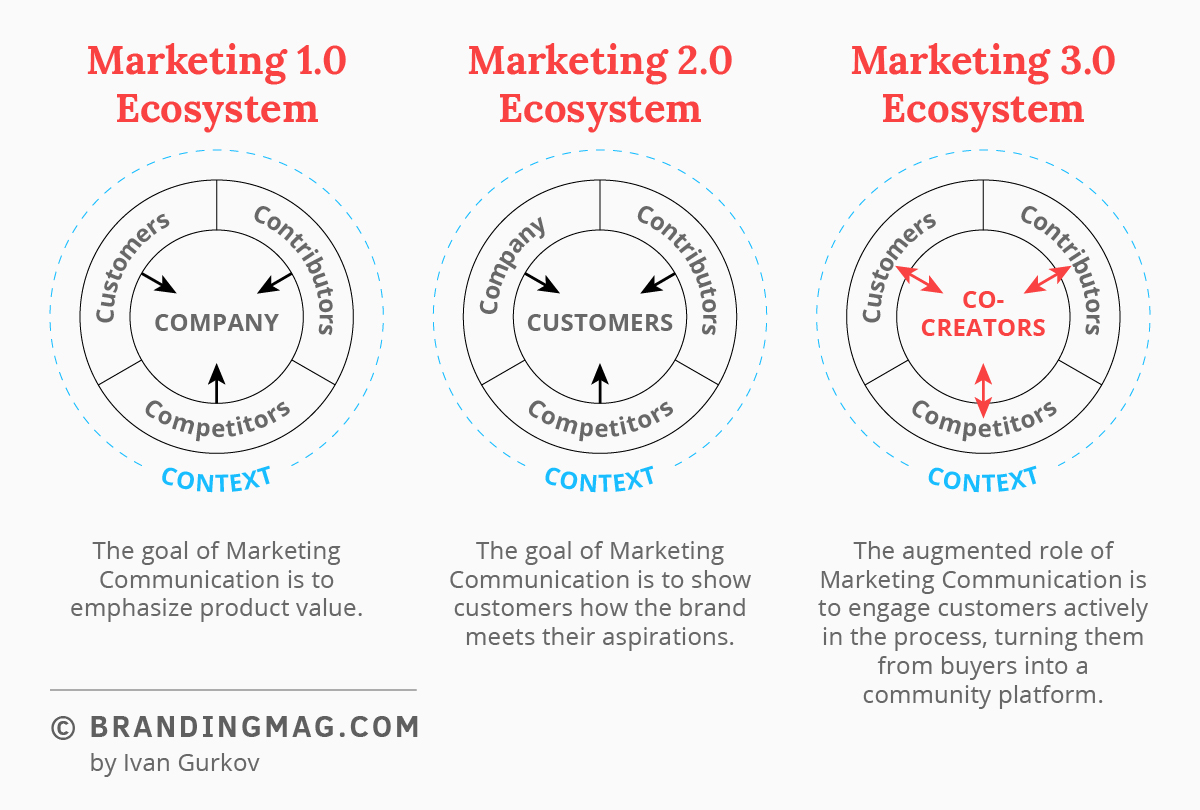
The 5-C framework illustrates the role of communication in Marketing 3.0. Here, communication is a major tool for turning the business ecosystem into an active brand community.
Accordingly, in the classification of Professor Philip Kotler, in Marketing 1.0, the business focus is on the product and the role of communication is to make a good product promotion. The value is in the superior product. Marketing 2.0 puts customer needs at the center and brings a humanistic understanding of the entire ecosystem. The role of communication here is to promote a strong brand based on emotional benefits and customer satisfaction. The value is shifted to the brand that meets the customer needs. Marketing 3.0 empowers customers and seeks their feedback and active participation, achieving better customer satisfaction while caring for their higher spiritual and social interests. Businesses and customers interact in synergy. The communication goals here are to engage customers in the marketing process, furthering their role in the business ecosystem, from product buyers to an active brand community. The value lies in collaboration, shared goals, and vision.
An example of such a community is Apple, which brings together not just people who want laptops and smartphones, but people who believe that creativity is changing the world. In line with its values, to make creativity and inspiration available day-to-day, in 2017 the company implemented the ambitious retail project “Today at Apple”. In all 495 Apple stores around the world, the company organized a variety of classes offering everything from mobile photography through to the Music Lab and even coding. The company has turned its stores into centers of creativity and made training in creativity through technology available worldwide with massive 16,000 sessions per week. With the project, Apple demonstrated that technology and software are not the core, the most important thing is what people can do with them — the Apple community.
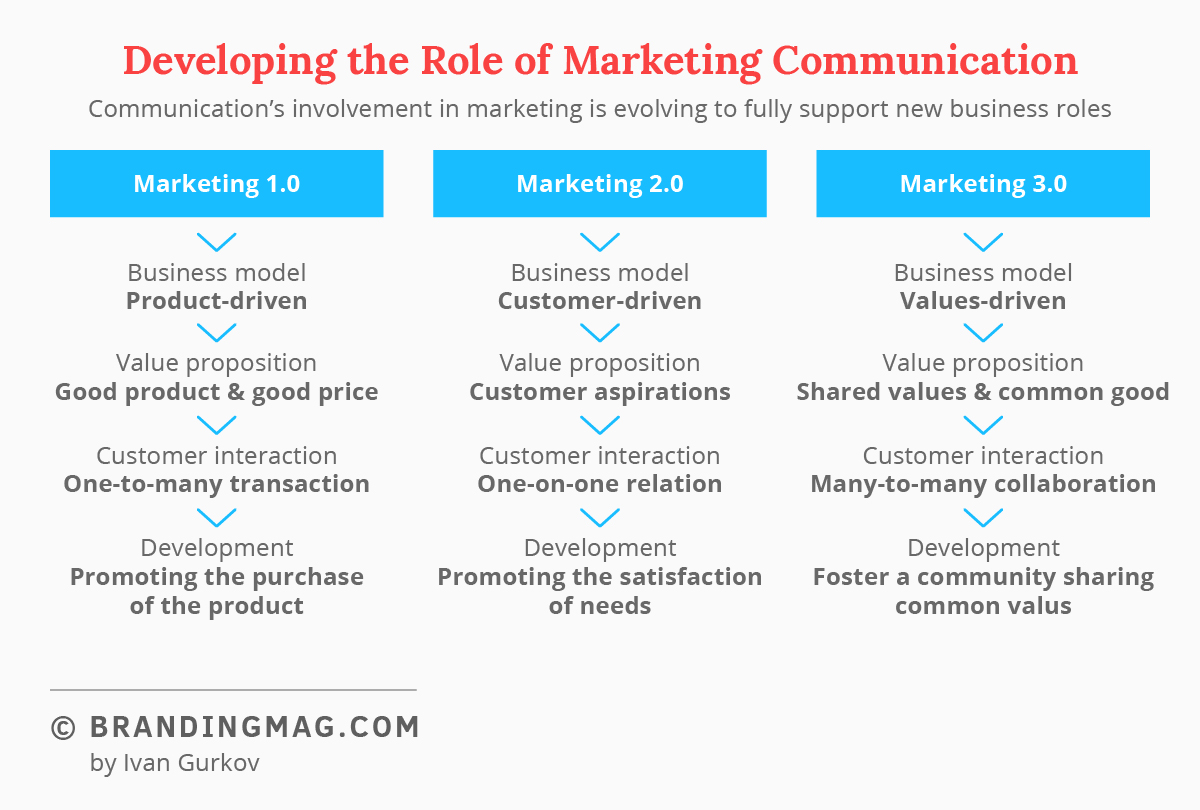
Today, communication has a higher purpose than offering products and emotions, communication helps companies be compassionate to people.
The time of traditional marketing is over. Bulk advertising rules no longer work. In the market context of hyper-competitive companies and increasingly demanding customers, the most important factor in any brand development is to own a community. The new most important role of marketing communication is to build communities.
How Marketing 3.0 Communication Stimulates Building Brand Communities
Traditional marketing communication delivers a value-proposition message based on the company’s core offerings: product, service, and customer satisfaction. In Marketing 3.0 communication, every proposal of the company is deeply related to its values. A strong value focus redirects the organization’s potential from just offering products to solving significant problems for people. Value-centricity and the will of problem-solving are the core premise of the community-creation process.
How communication facilitate the process? In order to build a community, along with its information function, Marketing 3.0 communication carries out three new tasks.
The first task is to cohere the unity of values, promises, and actions of the company. Coherent values, promises, and actions prove the commitment of the company and send a strong message to customers. If they are not bound by actions and results, the values of the company are just theory. After the age of mass marketing, it doesn’t matter what the brand promises, the brand’s ability to act proclaims its values in a way that makes customers identify with them.
The second task of communication is to design statements and actions of the company as bearers of direct value. In a media environment owned not by companies but by people, communication can do much less by speaking and much more by bringing perceptible value to the customer. In the market of hyper-offering of products and services, people value more significant topics. For example, today, a factor in how a brand is adopted is its environmental, social, and corporate governance. In this context, communication can bring more (meaningful) value to the customer than the physical product or service can.
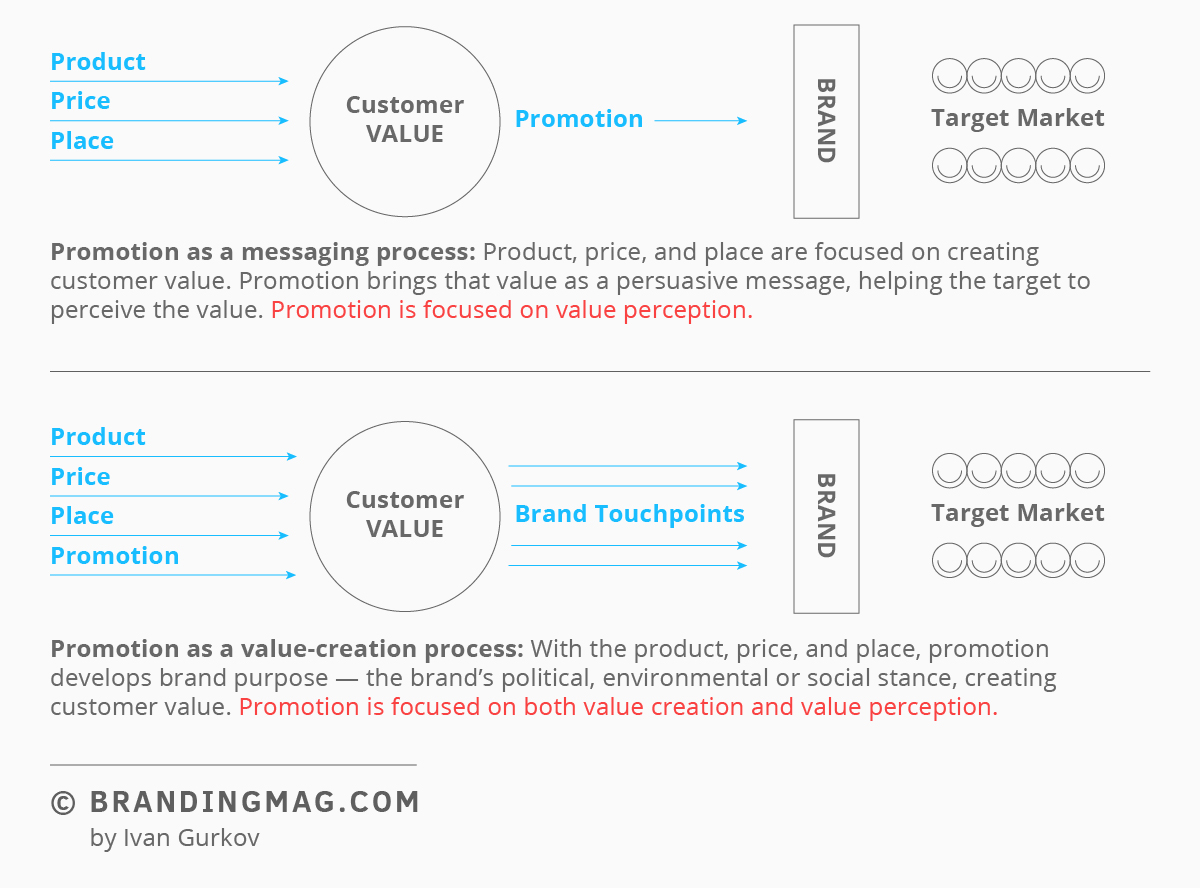
In the traditional Marketing-mix framework, value is created on the basis of product, price, and distribution, and the promotion expresses it as a message. In the new ecosystems of brands that earn their customers with passion and purpose, the role of promotion (marketing communications) is upgraded to both informant and customer-value creator.
The third task of communication is to invite people to marketing cooperation and co-creation. Since the rise of social media In the mid-2000s, the understanding of customer participation has been upgraded and it no longer means user-generated content, but customer collaboration at every level of brand building.
Based on the work of C.K. Prahalad and Venkatram Ramaswamy, communication furthers the co-creation process by designing:
The Dialogue
Dialogically communicating company values and informing the customer at each level of the value chain leads to knowledge sharing and customer understanding.
The Access
Communication designs opportunities for the customer to experience value: physical, emotional, and spiritual. Communication designs customer touch-points as value access-points.
Transparency and Risk-Reduction
Communication requires an open attitude of the company and proactively informing customers about negatives related to the product or activity of the company. The interests and higher needs of the customer are leading the company and determining the two-way customer relationships.

The ‘Nike by You’ platform, Lego Ideas, BMW Co-creation lab, X-box franchise, and ‘Co-create’ IKEA platform have involved their users in creating their products. Radiohead, with their album ‘In Rainbows’ and TeatreNeu, with their ‘Pay per Laugh’ campaign, allowed users to determine the price of the product. The chutney brand Gurmenica has invited customers to become distributors for the retail outlets they shop from. Converse and Doritos broadcasted ads created by their users. From a communication perspective, co-creation is a personalized unique experience, building a two-way customer relationship, facilitating a strong brand community.
The Principles of Marketing 3.0 Communication
Marketing 3.0 communication builds coherency between the values and actions of the brand and the values and actions of its customers. The three levels, values-promises-actions of the company, must convey a united value message, which is expressed at every customer touch-point. It is a two-way transfer — the customer touch-points are also the points of dialogue and co-operation.
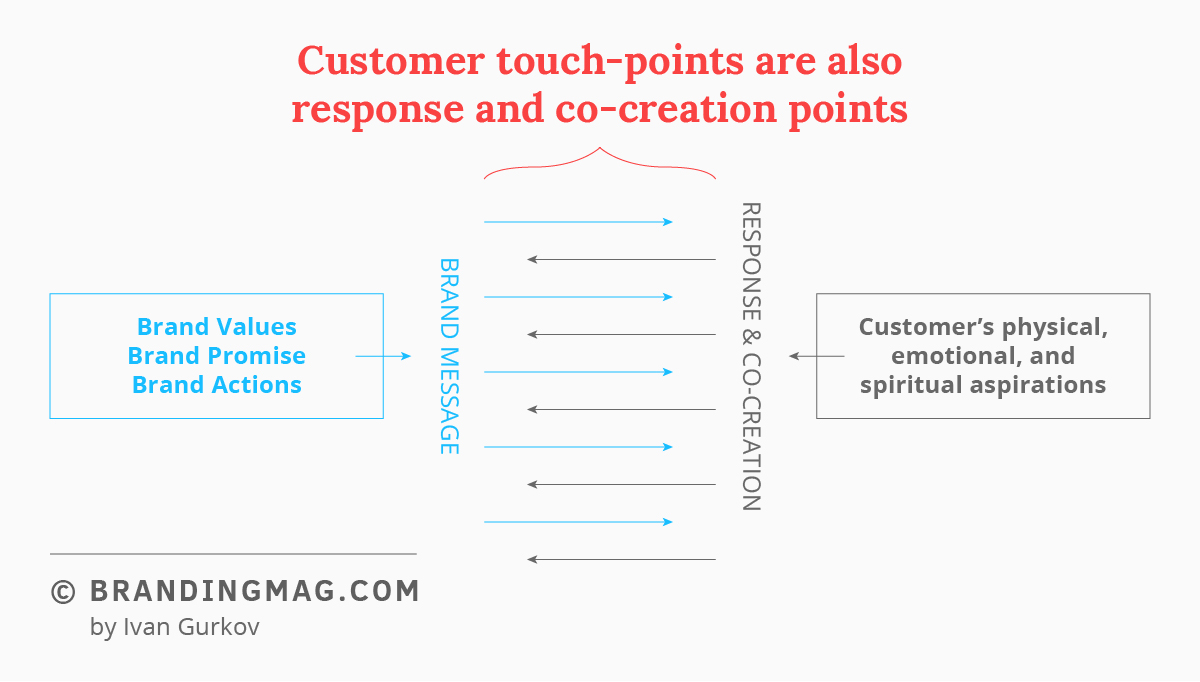
Marketing 3.0 Participation Channels and Implementation
Marketing 3.0 communication is open-source. Communication builds a participative customer relationship. Brand values, brand promise, and brand actions are widely open to two-way customer interaction. Through personal experience, people are convinced that brand values are consistent with their own values. In this context, traditional channels of the promotional mix do not offer sufficient opportunity for two-way contact with the customer and do not express the meaning of new customer relationships. The values, promises, and actions of the brand must convey a united message at every point of interaction of the customer with the brand — at the point of purchase, in the interaction with the product and the packaging, by the personnel and the service. Each of the points of interaction must be open to feedback and customer participation. The whole customer journey and the environments of the customer experiences should be the message of the brand and co-creation opportunity itself.
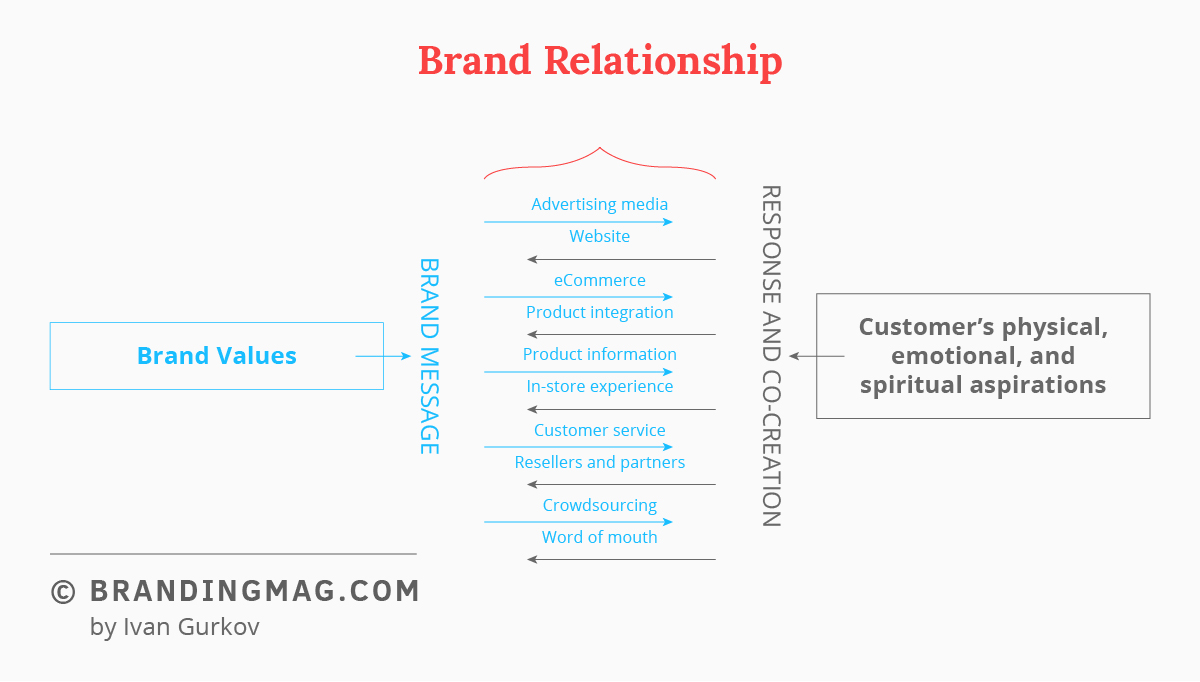
Marketing 3.0 communication is not limited to commercial communications in the traditional media of the promotional mix but integrates all marketing practices that shape the perception of the brand: reliability, style, and spirit.
In building a participative customer relationship, the basic approach of communication is action. Marketing 3.0 communication is not the equivalent of speaking, but of action. Storytelling is a tool for mass marketing. Promoting the brand’s value proposition is still a task, but brand-to-consumer monologue is an obsolete marketing model. Instead of telling fictional stories, Communication 3.0 defends views that are meaningful to people and takes real actions for which customers will tell stories.
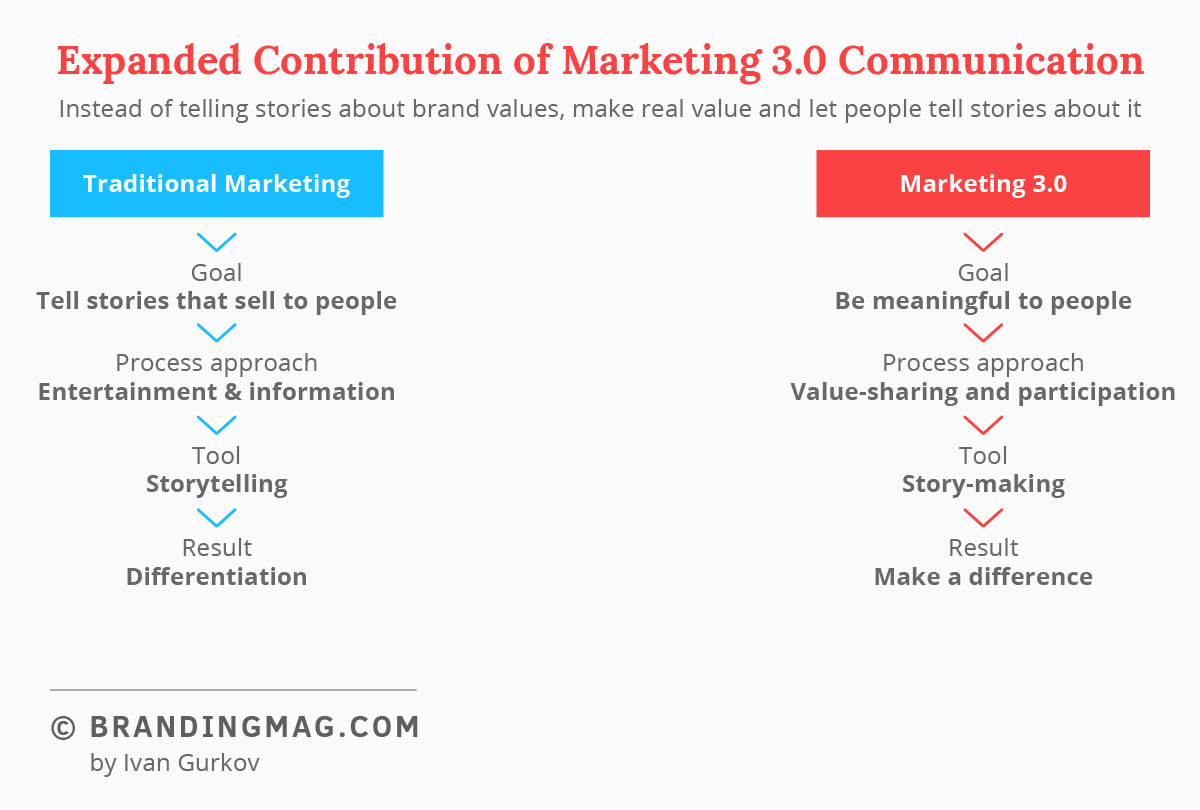
The new level of customer relationship is the action taken of companies and the co-operation of people, all based on shared values and in synergy. Operation and co-operation. Creation and co-creation.
The goal of new participative customer relationships is not to make more product buyers, but to inspire more idea associates. It is not about sellers and buyers, but people.
In the age of participation and collaborative value creation, Marketing Promotion grows into Human Relationship Management — the interaction of people and companies based on common values for collective value creation. Companies have the resources to manage change, but it is people who change things.
Companies have a vision, but people are the inspiration for that vision. The new type of relationship utilizes the full potential of customers — target customers are human beings: a physical body, a mind capable of thinking and analyzing, a heart that can feel an emotion, and a higher spirit.
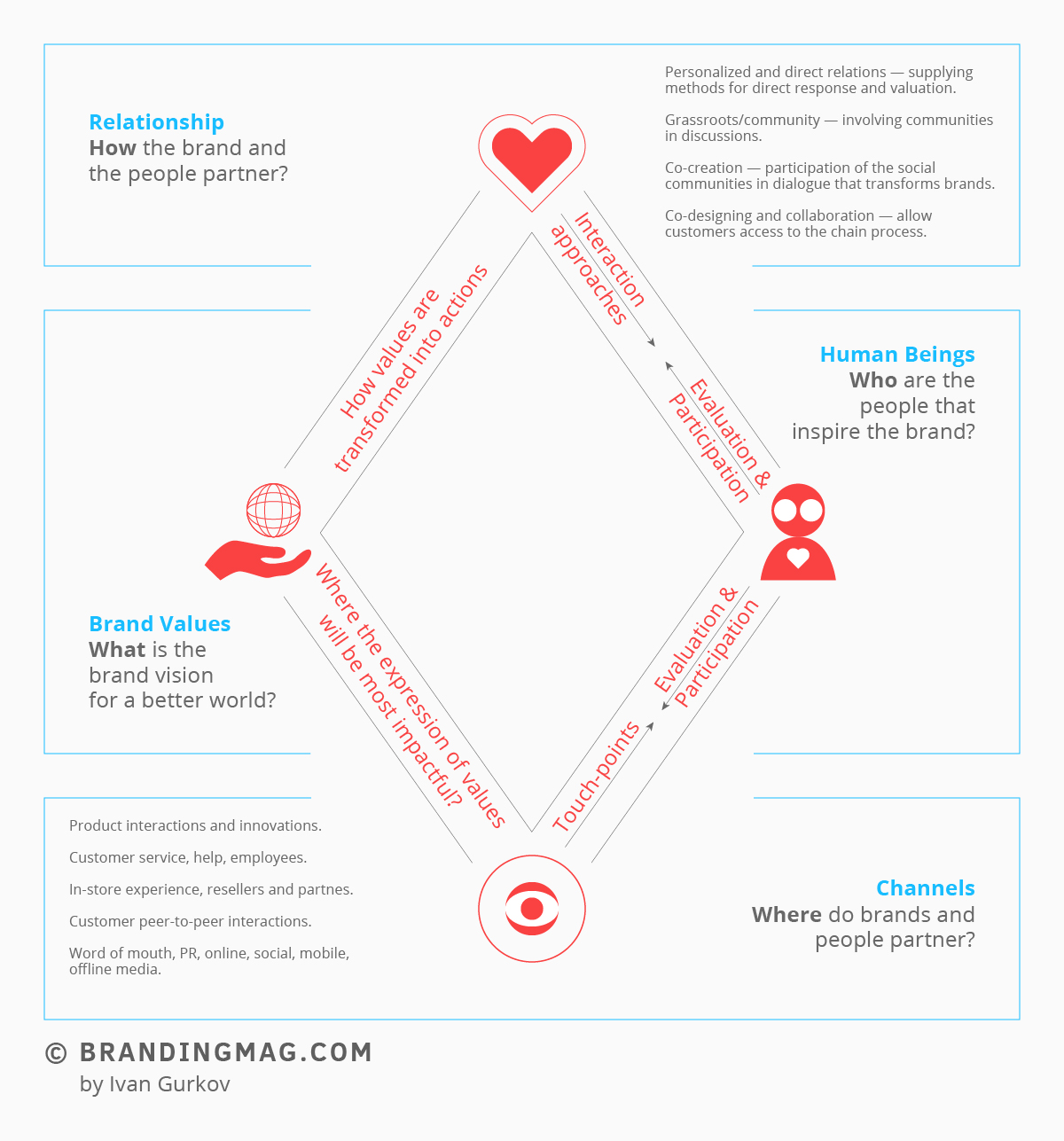
Human Relation Management — customer participation as a fundamental element in the business model. Communication 3.0 helps people recognize themselves in the company’s values and inspires them to participate in a brand community — an ecosystem for common-good creation by improving the company’s products, services, and its role in society.
To businesses, people are no longer the ultimate goal of the transaction, they are the inspirers and partners in a common ecosystem.
People want to live in a better world. People call businesses for understanding, care, and compassion in this new collaborative relationship: human relations.
Cover image source: Austin Kehmeier